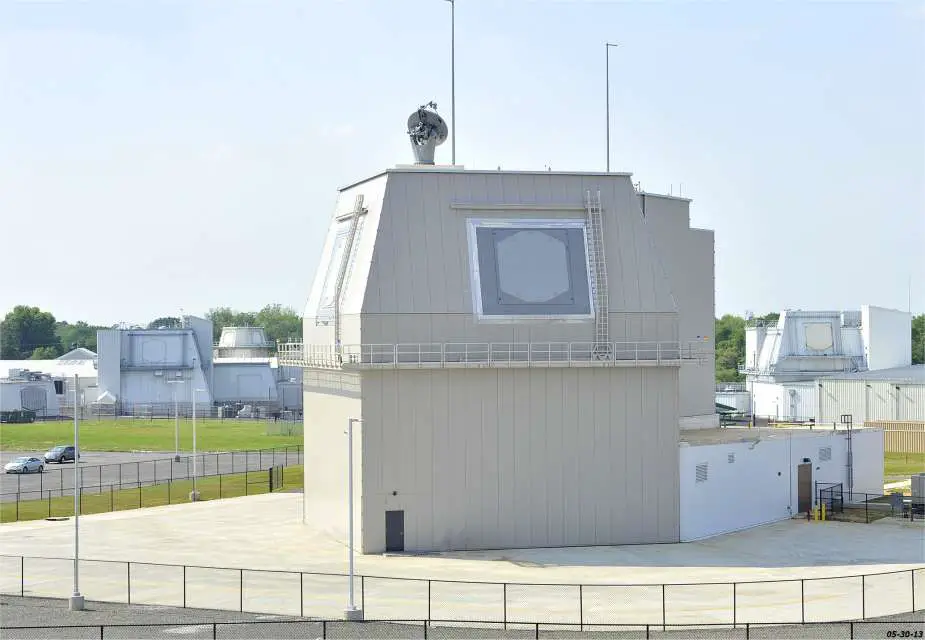Breaking News
NATO Announces Deployment of New US Aegis Ashore Air Defense Missile Base in Poland.
During the NATO Washington Summit held on July 11, 2024, NATO Secretary General Jens Stoltenberg announced the deployment of a new U.S. air defense base in northern Poland. This base is designed to detect and intercept ballistic missile attacks as part of a broader NATO missile shield.
Follow Army Recognition on Google News at this link

The deckhouse for the Aegis Ashore system bound for Romania at the Lockheed Martin Aegis facility. (Missile Defense Agency Photo)
The system, dubbed Aegis Ashore, is located in the northern Polish town of Redzikowo and is capable of intercepting short- to intermediate-range ballistic missiles, according to NATO. The allied missile defense shield is meant to protect European citizens, territory, and forces against ballistic missile attacks.
Other key elements of the shield include a second Aegis Ashore site in Romania, along with U.S. Navy destroyers based in the Spanish port of Rota and an early-warning radar situated in the Turkish town of Kurecik. NATO emphasizes that Aegis Ashore is purely defensive. About 200 military personnel are stationed at the two interceptor sites in Poland and Romania, with the base in the Romanian town of Deveselu operational since 2016.
Aegis Ashore is the land-based variant of the U.S. Navy’s Aegis Weapons System and the centerpiece of Phases II and III of the European Phased Adaptive Approach (EPAA). The system incorporates land-based versions of the various components used on Aegis ships, including the deckhouse, AN/SPY-1 radar, the Mark 41 Vertical Launching System (VLS), and Standard Missile-3 (SM-3) interceptors. The Mark 41 VLS is a versatile launching system capable of firing a variety of missiles, providing robust defense capabilities. The SM-3 missiles are designed to intercept ballistic missiles in the midcourse phase of their flight, enhancing the overall defense mechanism against medium and intermediate-range missile threats.
The Standard Missile-3 (SM-3) is a ship-based missile system utilized for ballistic missile defense, primarily designed to intercept short- to intermediate-range ballistic missiles during their midcourse phase of flight. One of its primary combat capabilities is targeting missiles outside the Earth's atmosphere, providing a crucial layer of defense against missile attacks. The SM-3 employs an Exo-atmospheric Kill Vehicle (EKV), which is a kinetic warhead designed to destroy incoming threats through direct impact rather than an explosive charge. This "hit-to-kill" approach ensures the complete neutralization of the threat.
Technically, the SM-3 is launched from the Mark 41 Vertical Launching System (VLS), a versatile launching system that can deploy various types of missiles. The missile itself is propelled by a multi-stage rocket motor, which includes a booster, a second stage, and a third stage rocket motor. The missile's guidance system uses advanced infrared sensors to detect and track targets, ensuring high accuracy. Additionally, the SM-3 is equipped with a solid-fuel rocket booster and a divert and attitude control system (DACS), allowing it to maneuver precisely in space to intercept its target. The missile's capability to operate in the exo-atmosphere makes it a vital component of the Aegis Ballistic Missile Defense system, enhancing the overall defense mechanism against medium and intermediate-range missile threats.
The Standard Missile-3 (SM-3) is a ship-based missile system utilized for ballistic missile defense, primarily designed to intercept short- to intermediate-range ballistic missiles during their midcourse phase of flight. One of its primary combat capabilities is targeting missiles outside the Earth's atmosphere, providing a crucial layer of defense against missile attacks. The SM-3 employs an Exo-atmospheric Kill Vehicle (EKV), which is a kinetic warhead designed to destroy incoming threats through direct impact rather than an explosive charge. This "hit-to-kill" approach ensures the complete neutralization of the threat.
Technically, the SM-3 is launched from the Mark 41 Vertical Launching System (VLS), a versatile launching system that can deploy various types of missiles. The missile itself is propelled by a multi-stage rocket motor, which includes a booster, a second stage, and a third stage rocket motor. The missile's guidance system uses advanced infrared sensors to detect and track targets, ensuring high accuracy. Additionally, the SM-3 is equipped with a solid-fuel rocket booster and a divert and attitude control system (DACS), allowing it to maneuver precisely in space to intercept its target. The missile's capability to operate in the exo-atmosphere makes it a vital component of the Aegis Ballistic Missile Defense system, enhancing the overall defense mechanism against medium and intermediate-range missile threats.
The operational range of the SM-3 varies by block variant. The Block IA and IB variants have a range of 900 to 1200 km (560 to 745 miles), while the Block IIA variant extends the range to 1200 km with a flight ceiling of 900 to 1,050 km, depending on the type of target. The maximum speed of the missile is 3 km/s (Mach 8.8) for the Block IA/IB variants and 4.5 km/s (Mach 13.2) for the Block IIA variant. The guidance system includes GPS/INS, semi-active radar homing, and a passive LWIR infrared homing seeker for the kill vehicle (KW), ensuring precise target acquisition and interception.


























